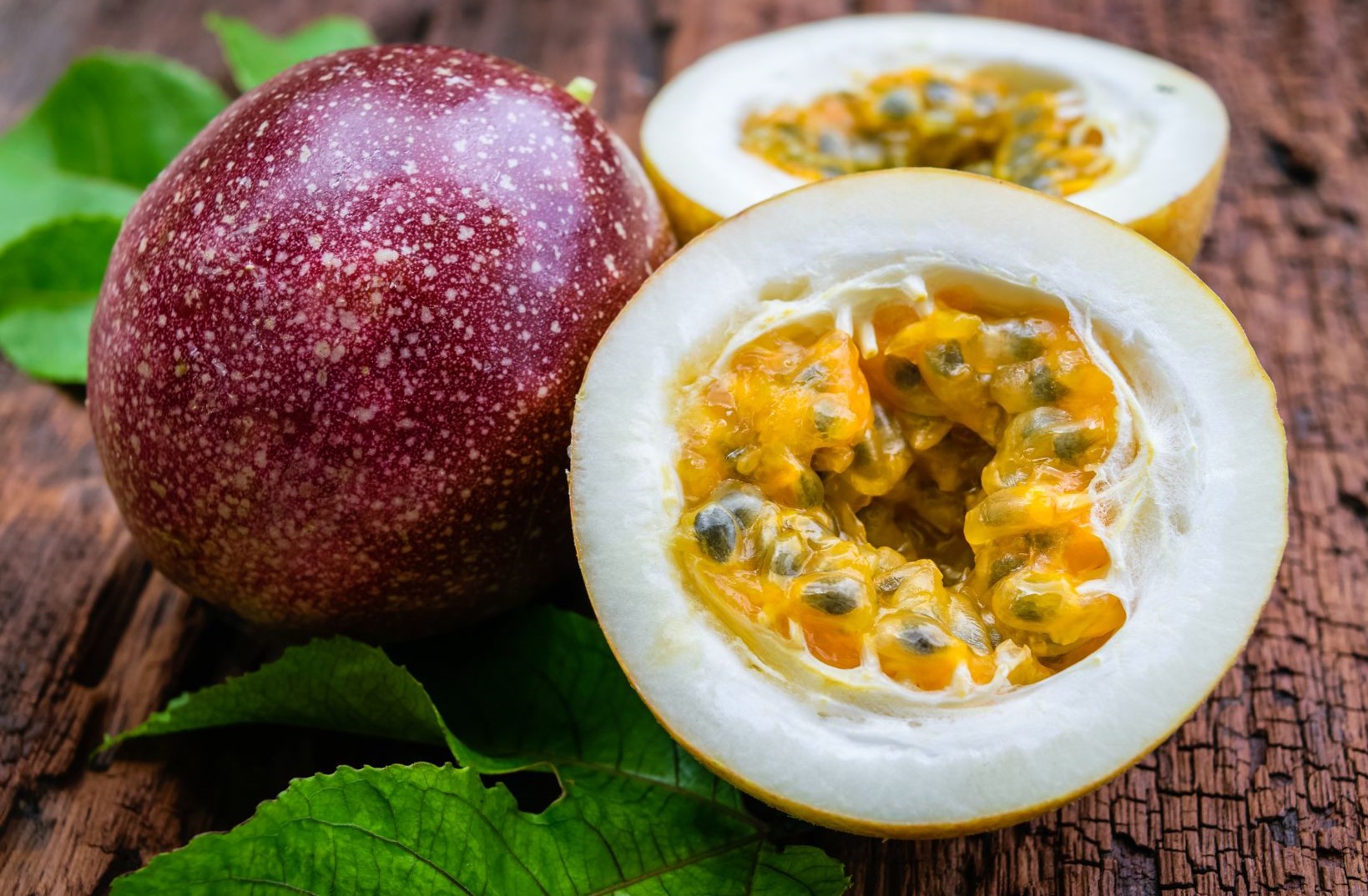Passion Fruit: History, Uses and Nutritional value

This post is also available in:
This post is also available in:
![]() Deutsch (German)
Deutsch (German) ![]() हिन्दी (Hindi)
हिन्दी (Hindi) ![]() Ελληνικά (Greek)
Ελληνικά (Greek) ![]() Português (Portuguese (Brazil))
Português (Portuguese (Brazil))
Origin of passion fruit and global production
The Passion Fruit is a woody perennial, fast-growing climber-vine that has 2 main types: the purple (Passiflora edulis) or the yellow (Passiflora edulis flavicarpa) passion fruit. Among the 2, the purple passion fruit type is more popular. The plant is native to South America and, more specifically, to Brazil (North Argentina and Ecuador). The plant was introduced in other parts of the world in the 19th century and became native and widely grown in India and Hawaii. Nowadays, the crop can be found almost in every country of the tropical belt and the global production is estimated to fluctuate from 640,000-850,000 tons per year. South America is still the biggest producer of passion fruit, with Brazil, Mexico, and Ecuador being the top 3 countries. Other large passion fruit producers are Australia, Columbia, South Africa, Zimbabwe, Kenya, Taiwan, Japan, and Hawaii.
Uses and Nutritional Value of Passion Fruit
Over the years, passion fruit has been used for consumption as a food source (fresh), mainly as juice blended or not with other fruits like mango or pineapple.
It has also been used for medical purposes as a sedative. Except for the fruit, the leaves and flowers of the plant have been used for tea production and a drink called maracuja grande. In Costa Rica passion fruit is also used for the production of a wine called “Parchita Seco”, while in Switzerland, it is also used for the production of a soft drink called “Passaia”.
Except for its superior taste, passion fruit is considered to be a nutritious fruit (fresh or its juice).
An average fruit weighs around 43 grams and consists of 30-32% of juice.
Based on UCDA, 100 g of raw passion fruit contain:
- Water: 73 g
- Calories – Energy: 97 kcal
- Protein: 2.2 g
- Carbohydrates: 23.4 g
- Sugar: 11.2 g
- Fiber: 10.4 g
- Phosphorus: 68 mg
- Potassium: 348 mg
- Vitamin C: 30 mg
- Vitamin A: 64 μg or 1270 IU
- Carotene beta: 743 μg
Passion fruit has been used for medical purposes. Thanks to its important bioactive compounds mentioned above, passion fruit has been attributed with anti-inflammatory, antidiabetic, and antistress activities while it also protects the human body from cardiovascular disease.
References:
- https://fdc.nal.usda.gov/fdc-app.html#/food-details/1102676/nutrients
- https://agritech.tnau.ac.in/banking/pdf/Passion%20Fruit.pdf
- https://www.fgcu.edu/cas/communityimpact/foodforest/files/passionfruit-ada.pdf
- http://www.agriculture.gov.vc/agriculture/images/stories/PDF_Documents/Growing-Passion-Fruit-in-the-West-Indies.pdf
- https://www.sciencedirect.com/book/9780128127803/nutritional-composition-and-antioxidant-properties-of-fruits-and-vegetables

Further reading
- Passion Fruit: History, Uses and Nutritional value
- Passion fruit: Types-Varieties of Passion Fruit and Plant Characteristics
- Passion Fruit: Soil & Climate Requirements, Land Preparation and Planting
- Propagation and Trellising of Passion Fruit plants
- Training and Pruning of Passion Fruit Plant
- Passion Fruit Plant Care: Irrigation and Fertilization of Passion Fruit
- Important Passion Fruit Diseases
- Important Passion Fruit Pests
- Passion Fruit: Harvest, Yield and Storage








































































